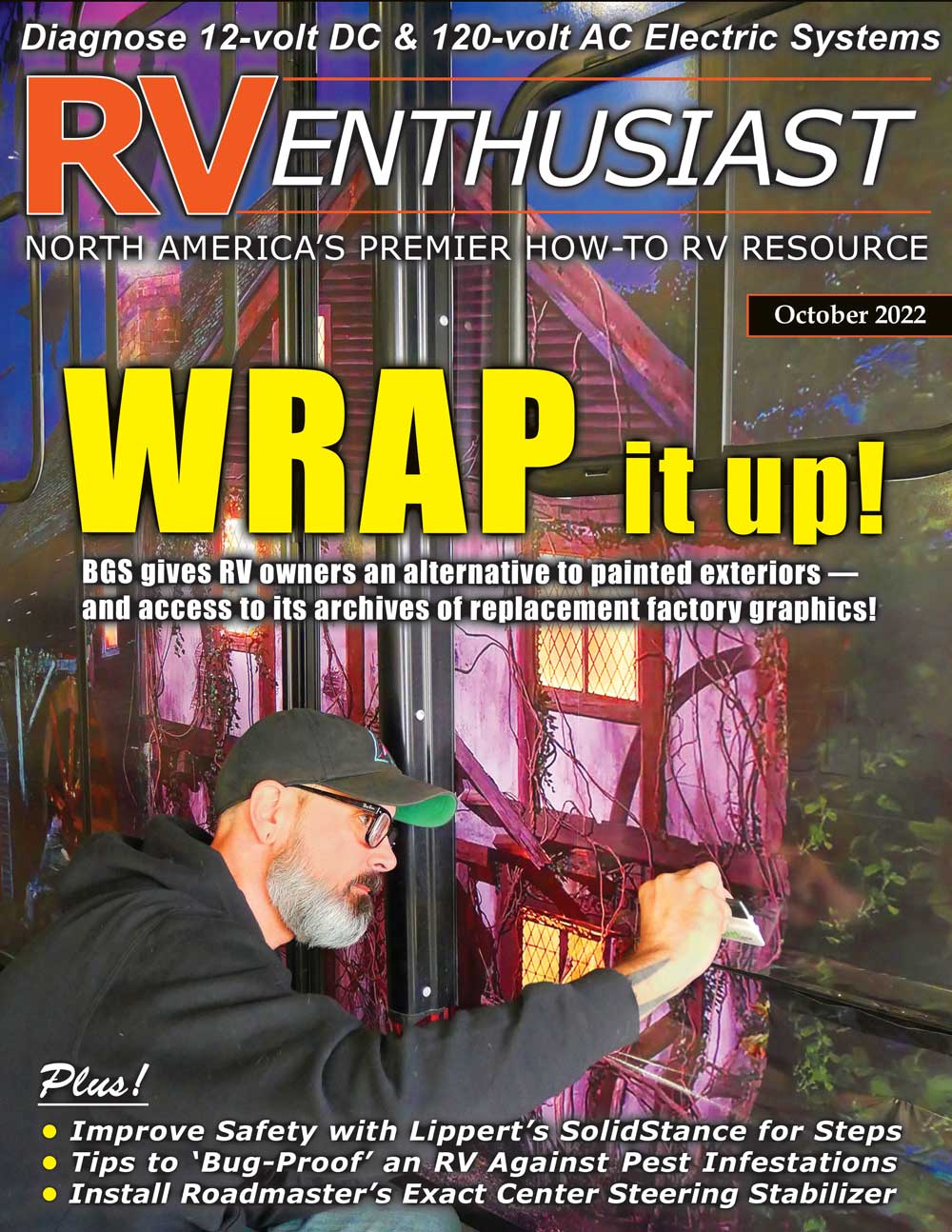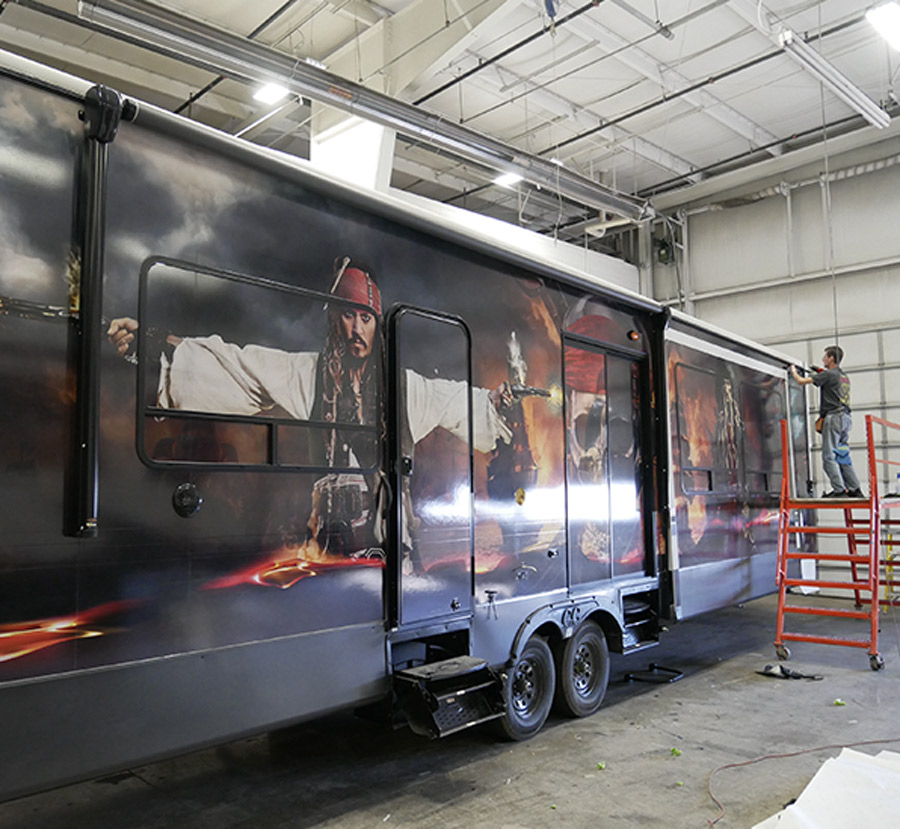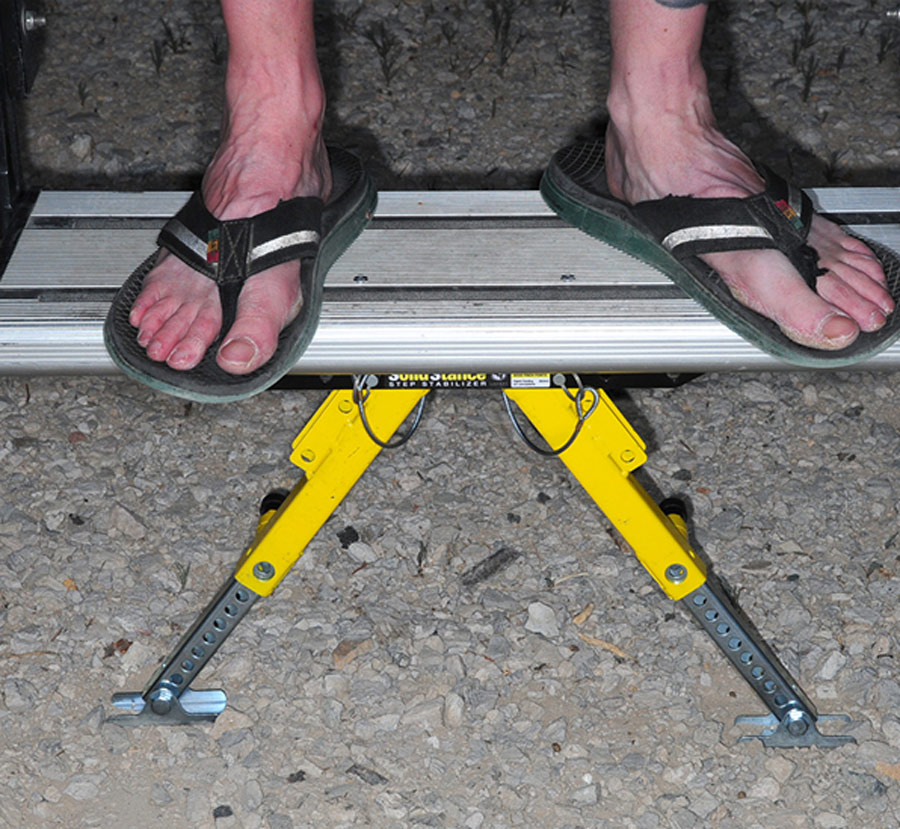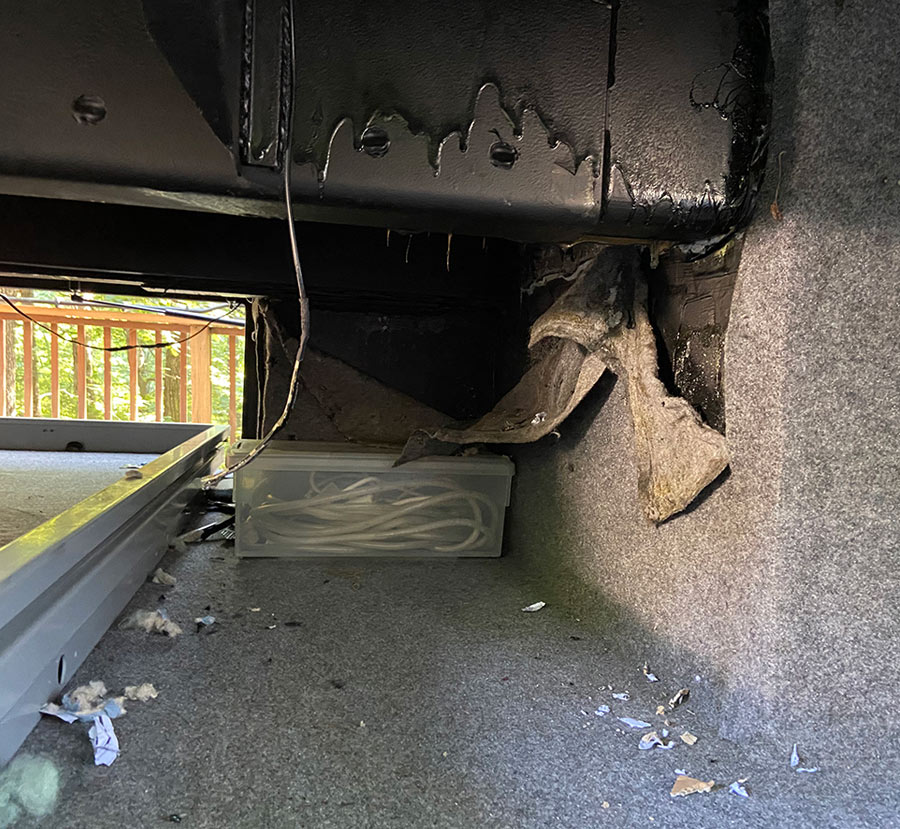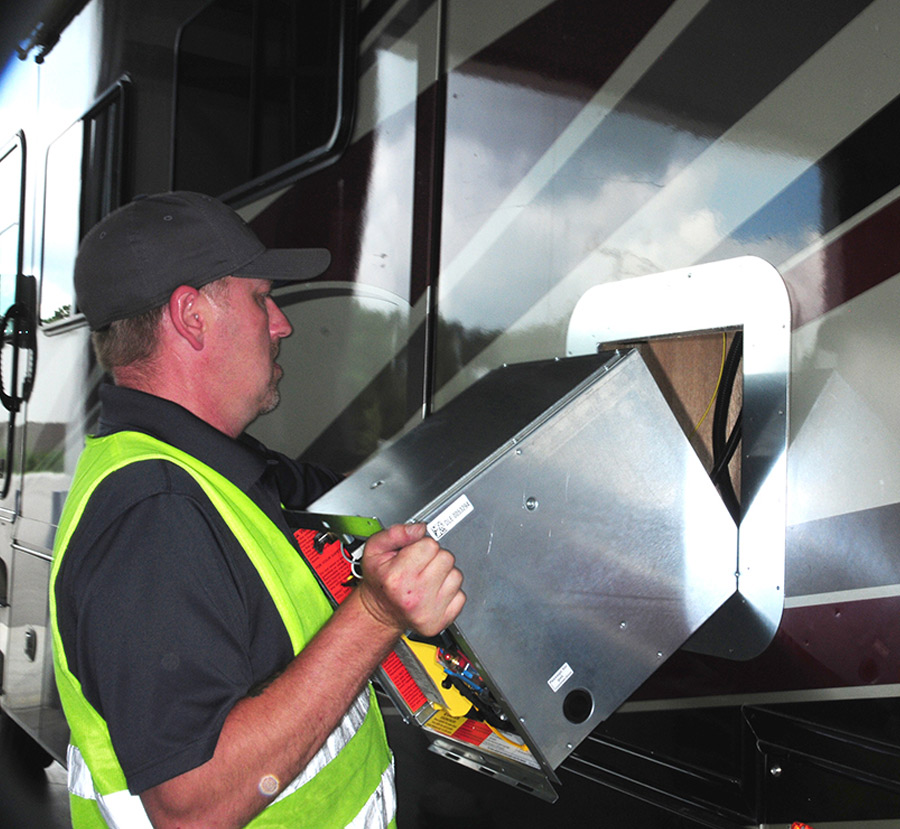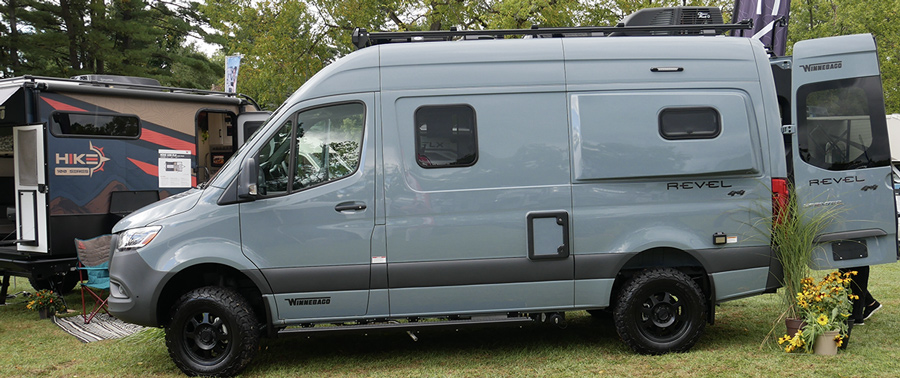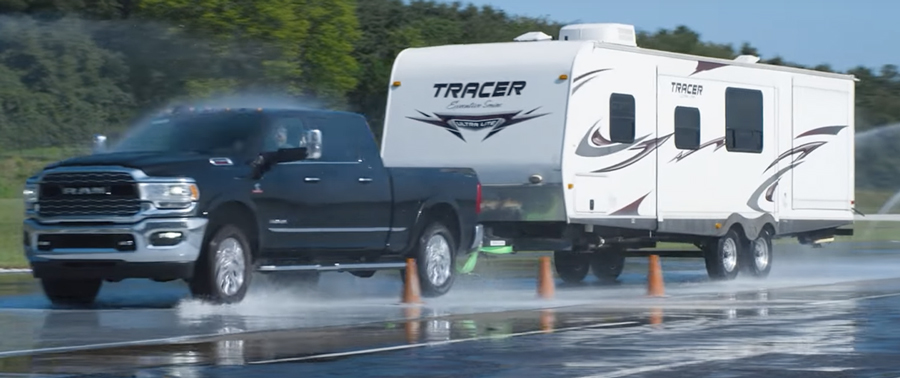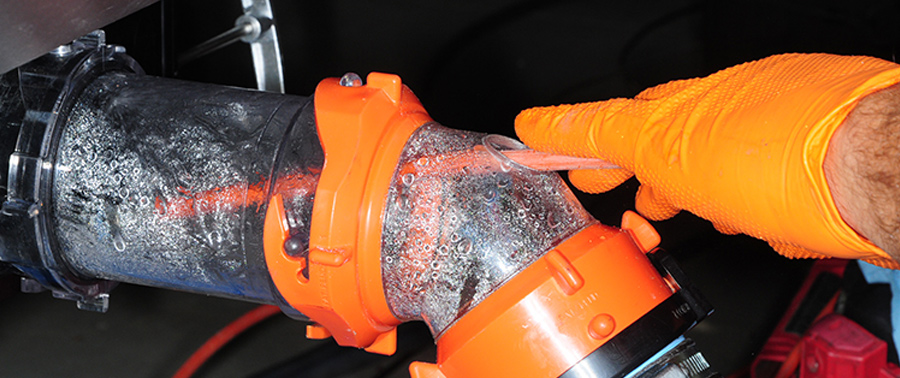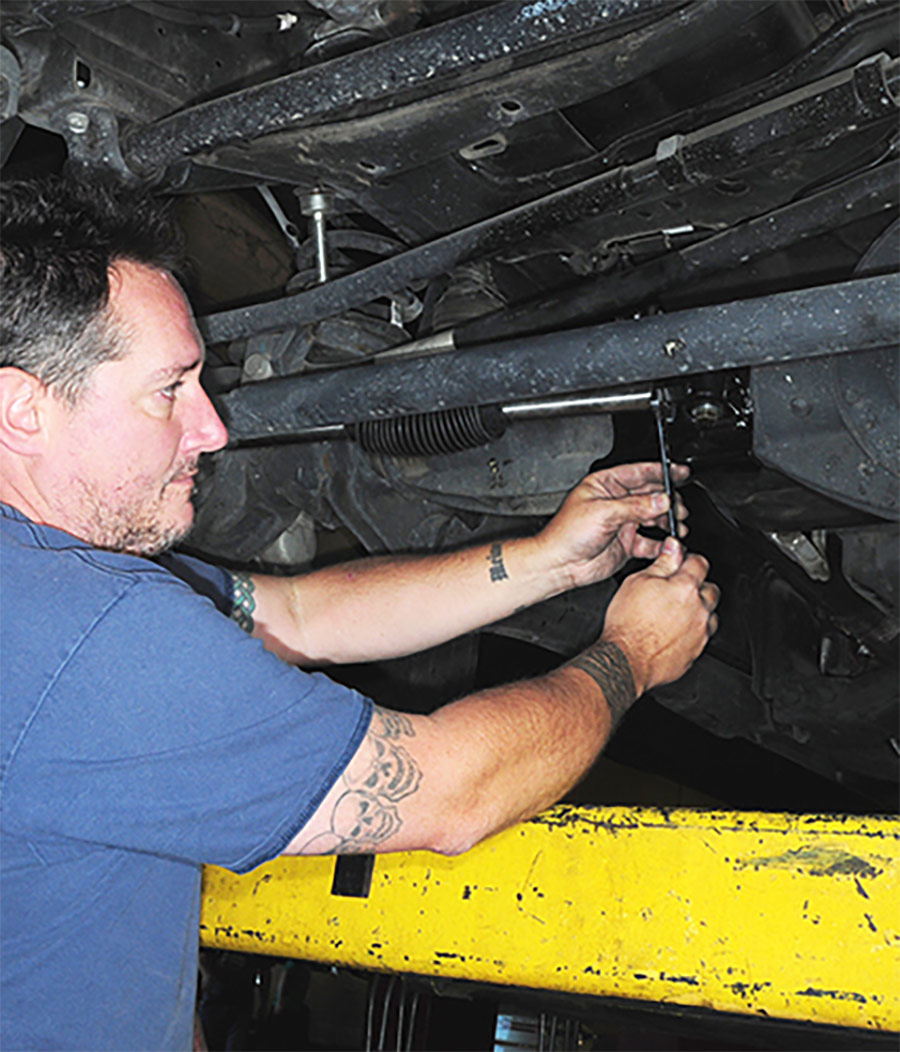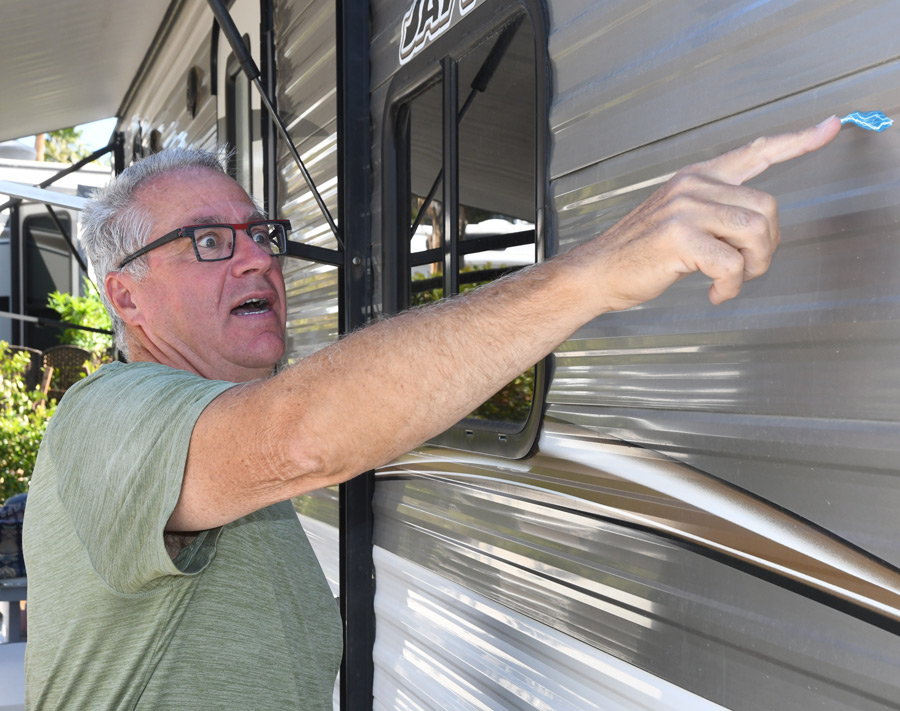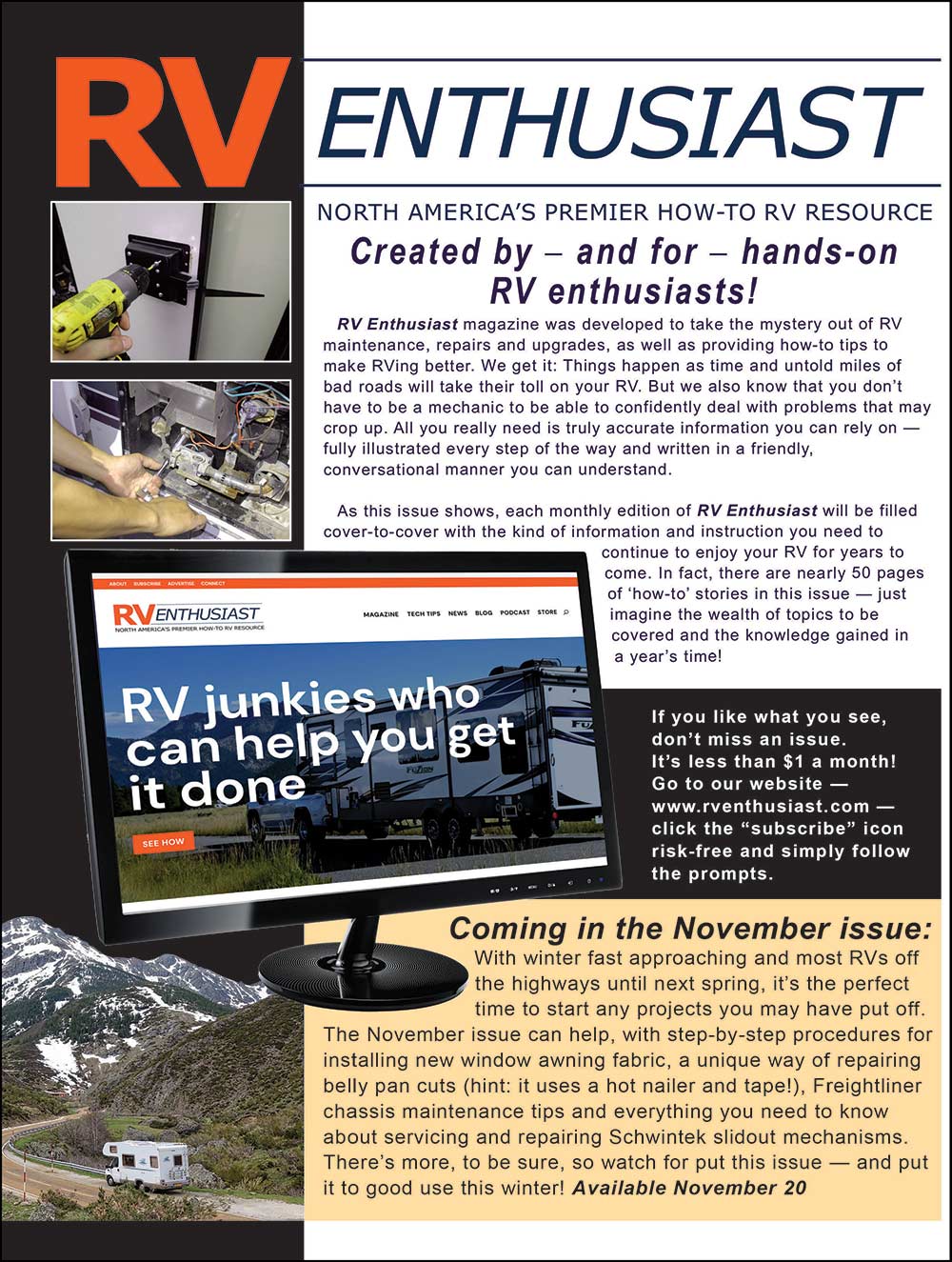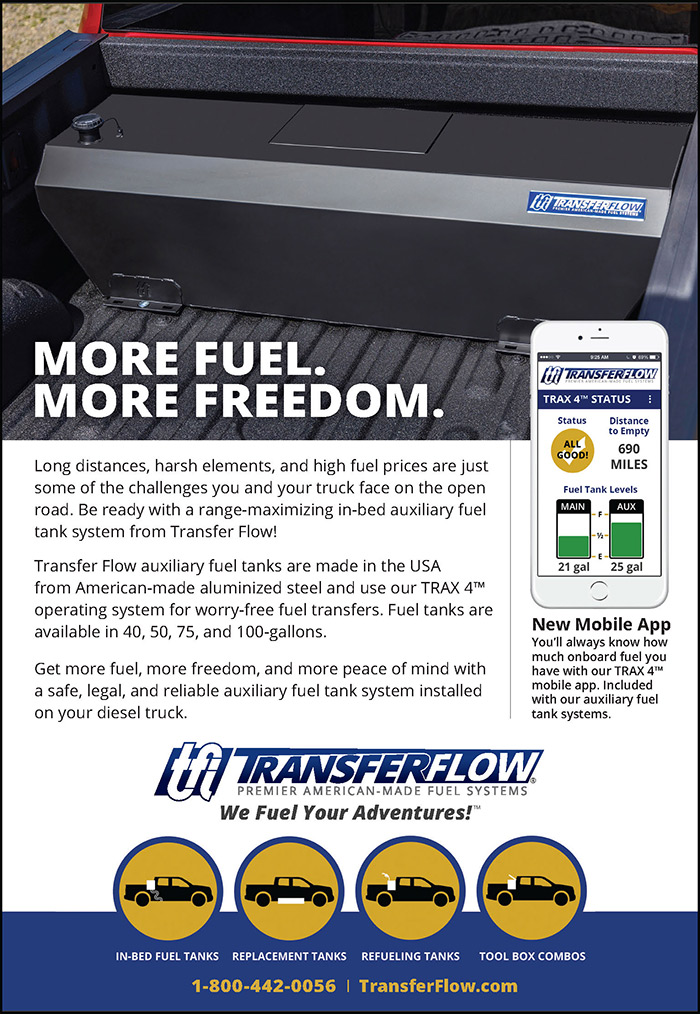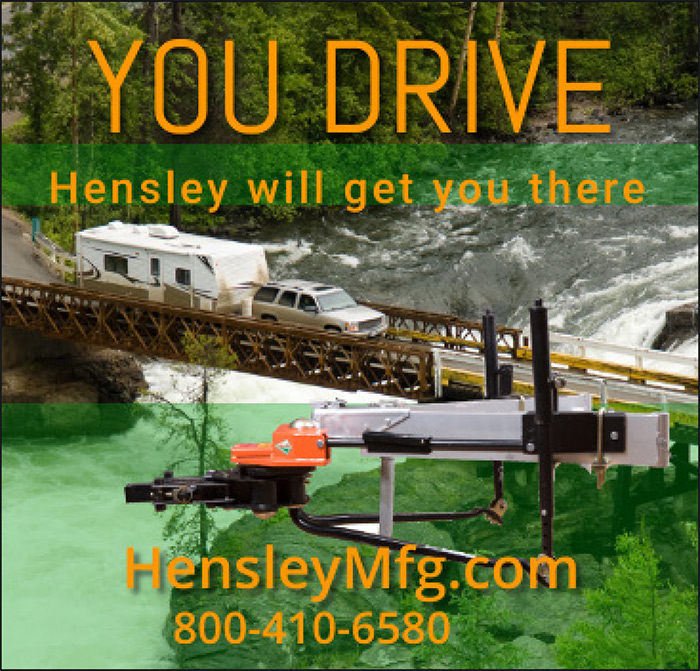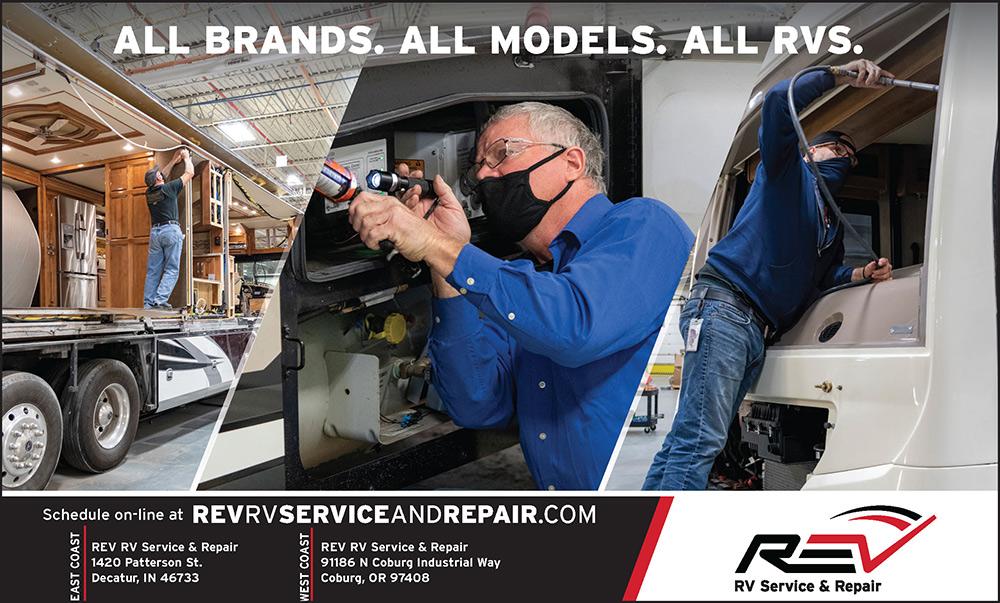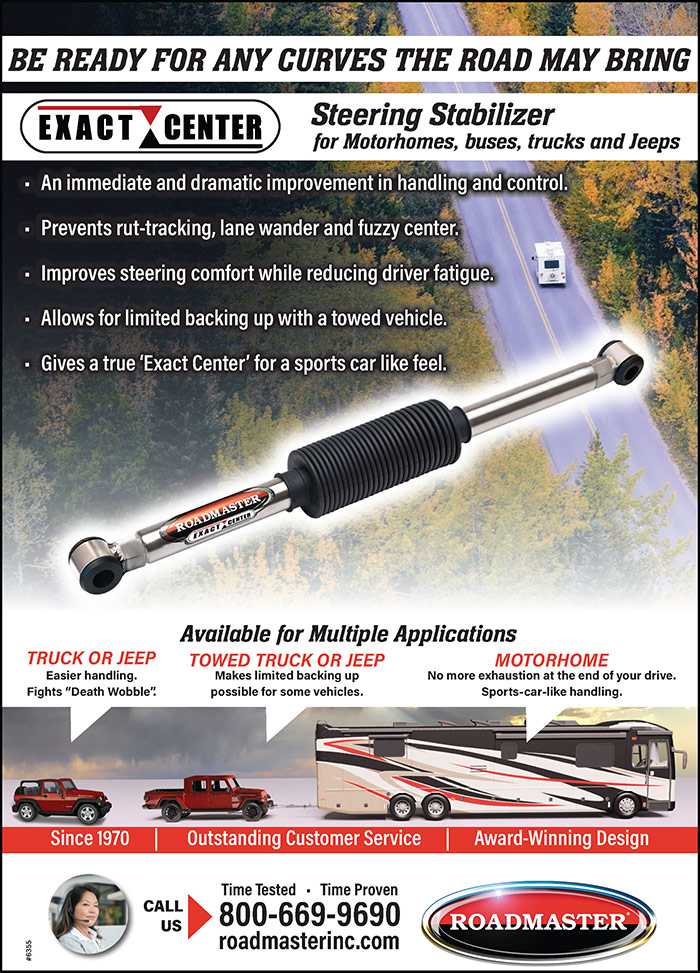
There are a lot of used RVs traveling America’s highways — but the environments they exist in aren’t really conducive to maintaining an optimum appearance. Burlington Graphics Systems, the country’s premier supplier of factory graphics, can help — with everything from full-body wraps to supplying replacement factory graphics from its design archives.
The act of getting in and out of a trailer or fifth wheel is sometimes not very graceful. Installing Lippert’s SolidStance Step Stabilizer takes the wobble and flex out — and that sinking stomach — when entering and leaving a conventional trailer or fifth wheel not equipped with an entry step system that extends to the ground. All safety additions should be this easy.
Dealing with unwanted guests — from ants to raccoons — is an inevitable part of camping. But when you’re visiting their “home” you don’t need to welcome them into yours. There are a lot of unintended entry points in your RV — you would be surprised at how and where critters can enter your rig — and sealing them off needs to be Job One.
Let’s face it: we humans love our shower time. Unfortunately, the 6- to 12-gallon water heaters installed in most RVs don’t enable anyone to linger under the shower. Truma’s AquaGo instantaneous water heater — installed on certain rigs — provides all the hot water you could reasonably want. And you can have it retrofitted to your existing RV.
Photo by Bruce Hampson
There’s not much in the RV lifestyle that will make a driver cringe quicker than the “death wobble” caused by certain tow vehicles’ unwanted harmonic steering oscillations. Roadmaster’s new Exact Center Steering Stabilizer civilizes handling while reducing driver fatigue — and improving control.
Power Loss Puzzle
After the refrigerator and electrical devices in the slideout quit working, the search for the short causing the breaker to flip was on. In the end, a failed Molex connector — damaged by moisture — was found to be the culprit. A little creativity restored the “juice” to the fifth wheel.
Unlike your home, RVs have dual electrical systems — and chasing down gremlins can be difficult. Not everyone can mimic Thomas Edition, but using this simple guide to diagnosing electric problems unravels the mystery of how 120-volt AC and 12-volt DC power integrate with the inner workings of an RV.
A certain amount of stray voltage on the exterior of your RV is normal — but anything in excess of 30 or 40 volts is potentially life-threatening to anyone that comes in contact with it under certain conditions and circumstances. Here’s what a “hot skin” problem is, what often causes it, where that voltage comes from and how to measure for it.
(805) 320-6909
[email protected]
EDITOR – Bruce Hampson
(574) 584-4616
[email protected]
TECHNICAL DIRECTOR
BILL GEHR
(805) 340-5015
[email protected]
ART DIRECTOR – MIKE ACCUARDI
[email protected]
26362 Douglas ave., Elkhart, in 46514
 AFFILIATE NOTICE: RVE Media Group LLC provides links to vendors and products, such as an Amazon Associates account, for informational purposes, but that may provide a commission if you purchase from that link. We often label these links with language that provides transparency if the destination is an advertiser, affiliate, or partner. Products are often provided to RVE at little/no cost for editorial testing purposes by vendors/suppliers. Under no circumstances does this affect the results of the test or install as published in RV Enthusiast. Sponsored content is identified as such directly on the content.
AFFILIATE NOTICE: RVE Media Group LLC provides links to vendors and products, such as an Amazon Associates account, for informational purposes, but that may provide a commission if you purchase from that link. We often label these links with language that provides transparency if the destination is an advertiser, affiliate, or partner. Products are often provided to RVE at little/no cost for editorial testing purposes by vendors/suppliers. Under no circumstances does this affect the results of the test or install as published in RV Enthusiast. Sponsored content is identified as such directly on the content.
PRIVACY POLICY: Our complete privacy policy can be found at https://rventhusiast.com/privacy-policy/



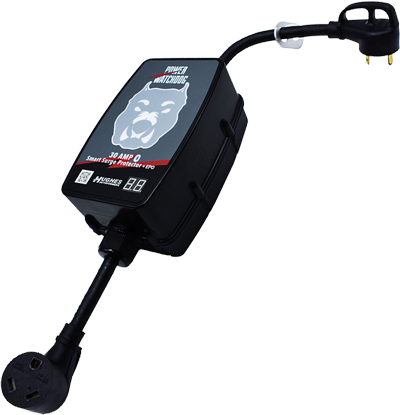
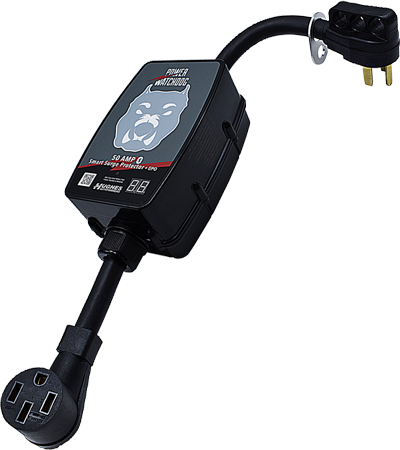
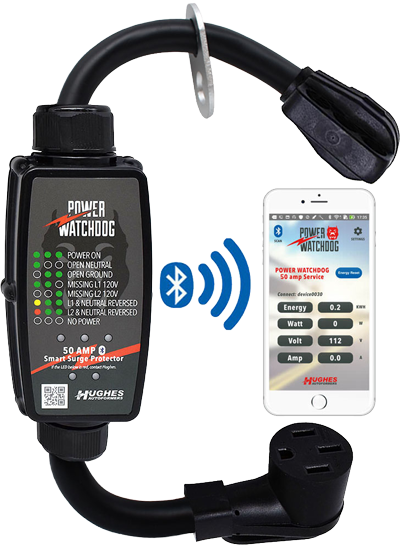
istorically, when life pivots in the United States, the RV industry takes it on the chin. However, when the COVID-19 pandemic shut down the country, the industry got lucky — it prospered beyond belief. Getting out in an RV was one of the best ways for people to find relief from the pandemic stresses, and those who embraced RVing were able to enjoy a little chunk of normalcy and stay relatively safe from the bug. And the lifestyle caught on in a big way.
Now we’re faced with new challenges — including one of our old nemeses: fuel. Continued bad news about fuel could send shock waves. Or will it this time? I suppose the answer is a little more complex than a simple “yes” or “no.”
Granted, fuel can have a seriously negative affect on our mental well-being — and our wallets — but it’s best not to get hung up on reading the posted fuel prices at service stations. When you do the math, RV vacations are still more affordable. While I still stand by the premise that fuel prices can be reckoned with — and Europeans proved that years ago — a new fly in the ointment may require some lifestyle adjustments and possibly more practical decisions when enthusiasts select the best RV that fits their needs. An article, “Bottleneck Fuels Record Gas Prices” in the May 28, 2022 issue of the Wall Street Journal (WSJ) was troubling. Fuel prices will likely be impacted by reduced refinery production and a looming ferocious global appetite for fuel as driving routines are normalized and the world climbs out of pandemic shutdowns and restrictions. According to the article in the WSJ , when demand plummeted during the height of the pandemic, older refineries were shuttered. Getting back to normal, if that’s even possible, may be painful. Alas, are we looking at a repeat of the long lines of the early 1970’s? Maybe. The misguided energy policy in this country will undoubtedly continue to fester controversy.
News & Notes
Slow Down, You Move Too Fast
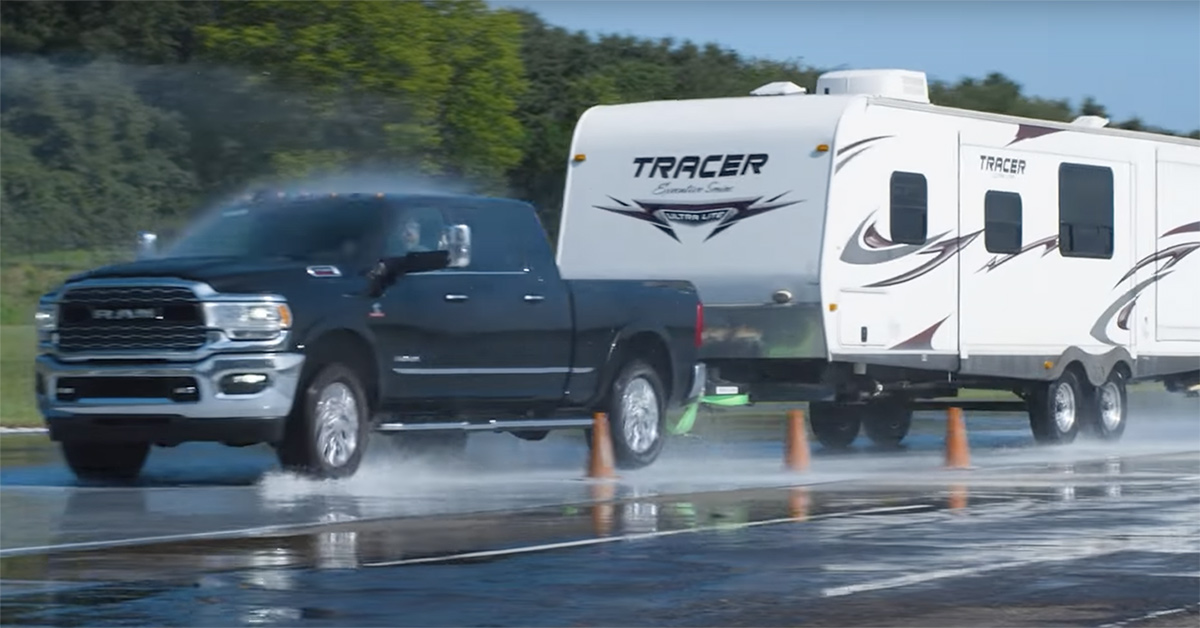
The Lippert ABS was tested extensively at the Navistar Proving Grounds under various conditions.
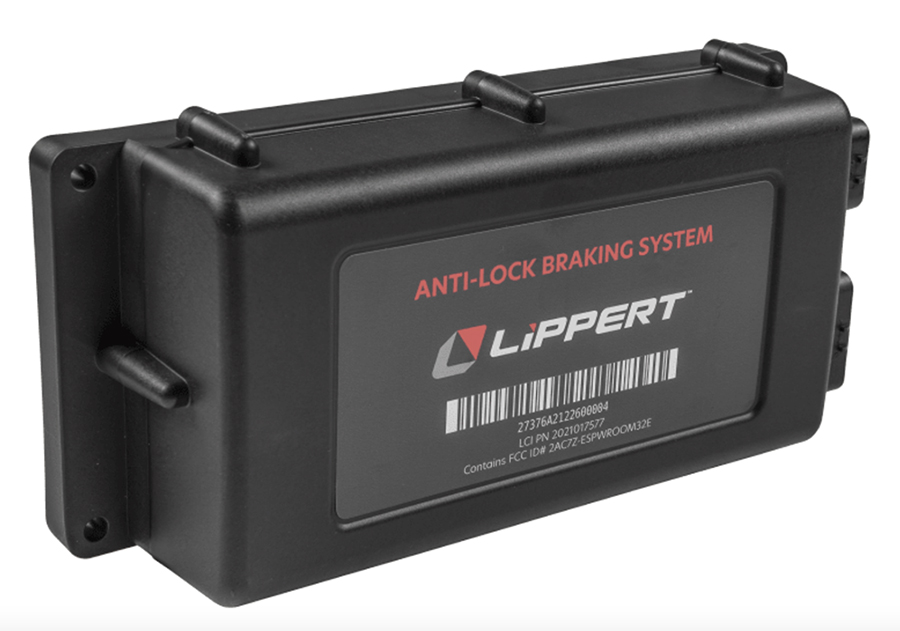
The Lippert ABS, tested exhaustedly over multiple grueling scenarios, combines the technologies of Lippert’s time-tested trailer axles with cutting-edge connected RV systems, delivering a comprehensive safety mechanism for all trailer types, particularly travel trailers, fifth wheels and cargo and equestrian trailers.
This integrated system works with the trailer’s brakes to prevent wheel lock-up and enhance control over the vehicle-trailer combination, particularly in slippery or abrupt braking situations. When the driver encounters an emergency braking situation, instead of the trailer fishtailing off to one side and pulling the vehicle into a dangerous drift, the Lippert ABS system helps the driver maintain control and assists in bringing the vehicle and trailer safely to a stop.

Pressure-cleaning holding tanks should be part of your annual RV maintenance.
Bill, do you use a type of chemical in your holding tanks and, if so, what do you recommend for the black and gray tanks? Do you use any type of cleaner or holding tank chemical that would strip the walls inside the tanks? My monitor lights are not providing accurate readings. They used to read fairly close, but now the black tank reads 3/4 all the time and the gray tank reads 1/2 until it starts to get above that level and then it’s somewhat accurate. I’m assuming there’s a buildup of something on the holding tank walls. I tried a couple of tank bombs that I found on the Internet, but they did not work.
— Diane Waterhouse
Diane, great question — and the answer is “yes” I do use chemicals in both the black and gray tanks, but less often in the gray tank. I add chemicals to my black tank after every dumping and flushing; my go-to chemical is Thetford Aqua Kem blue, which does have formaldehyde, but seems to be best for odor control. Odor control is especially important when the weather is hot — most chemicals without formaldehyde do not stand up well to the hot weather.
I also use a tank cleaner periodically and have the tanks professionally pressure-cleaned once a year — about the time that passes before the monitor becomes erratic. Cleaning the tanks with high pressure will strip water deposits and other materials that have become stuck to the walls over time. There are companies throughout the U.S. that specialize in this procedure and offer mobile service. After cleaning, your monitor should be restored to accuracy, which has always been the case in my fifth wheel that I live in full time.

Burlington Graphic Systems moves into the retail side of RV graphics, including wraps and replacement designs for pre-owned RVs. “Our library of designs and parts and shapes and sizes for the RV and marine industries is extremely large. There’s a good possibility that for any retail consumer who calls, we have what they need,” said BGS vice president Doug Graham Jr.
iven the escalating prices of new motorized and towable RVs fueled by pandemic-related parts shortages and rising manufacturing costs, it’s not surprising that owners are opting to hold on to their current motorhomes, fifth wheels and travel trailers well past the time they otherwise might have traded up for a new model.
Older RVs come with their own set of problems, though, and while it’s fairly easy and relatively inexpensive to update interior layouts — especially when tackled one project at a time — exteriors present sometimes seemingly insurmountable hurdles to restoring an RV’s former appearance. When you consider the harsh environment the outside of your RV is forced to endure, it’s understandable — from the oftentimes bitter winters of the north to the unrelenting summers of the south and west, virtually no RV is immune from being ravaged by weather conditions. And we haven’t even touched on the toll taken on exteriors by everything from bug splatter to road debris.

he act of getting in and out of a trailer or fifth wheel is not very graceful. Until recently, with the advent of entry step systems like Lippert’s Solid Step and MORryde’s StepAbove that fold down from the doorway and contact the ground to create a stable platform, egress and ingress was relegated to two or three rungs — and, on occasion, sometimes four — that extend from a well under the doorway. Unlike steps that fold from the doorway, the retractable versions can create angst when they flex and wiggle while just hanging in space. While these quintessential steps have provided good service over the years, people still have to watch their footing and acclimate to differences in spacing and step width. The rungs are supported only by a retractable framework and all that flexing can create uneasiness for occupants and even weaken the structure to the point of failure, which can lead to injury.
Owners have devised several ways to stabilize these steps, including the use of blocks, and there are a few commercial products on the market that help somewhat. Recently, Lippert (LCI) introduced the SolidStance Step Stabilizer, which changes the paradigm when it comes to devices designed to provide stability when entering and exiting a towable. The SolidStance bolts to the existing bottom step permanently and its clever design makes it possible to simply fold the legs when it comes time to travel. The entire installation process takes less than an hour and is do-it-yourself friendly.

etting away from big cities or even suburbs is a big part of why many RV owners choose this lifestyle. It doesn’t matter if you are a full-timer, an any-timer or even a some-timer — there is nothing like the serenity of taking your RV to a remote area and enjoying nature. The closer I can get to a forest, lake, river or ocean the better I like it.
When we go to these areas, however, we often forget that we are now invading the territory of hundreds — if not thousands — of potential wildlife that find your RV just as great a place to live as you do. These critters don’t care if you are in a million-dollar bus or a pop-up camper — your RV is dry, warm and very inviting to them.
The goal of most campers is to enjoy Mother Nature without having Mother Nature enjoy them or their RV too much. That’s often easier said than done. If you have been camping long enough, you have likely had or heard of someone else having their rig infested by bugs, ants, rats, snakes, or a much larger animal like a raccoon or opossum. In fact, the insurance industry reports that rodent damage is one of the largest reasons for RV insurance claims. Since RVs often sit unused for weeks or months at a time, these long periods of storage are often the time when these infestations begin or grow wildly as owners are not there to see the signs of infestation — or, more importantly, take measures to stop the damage.

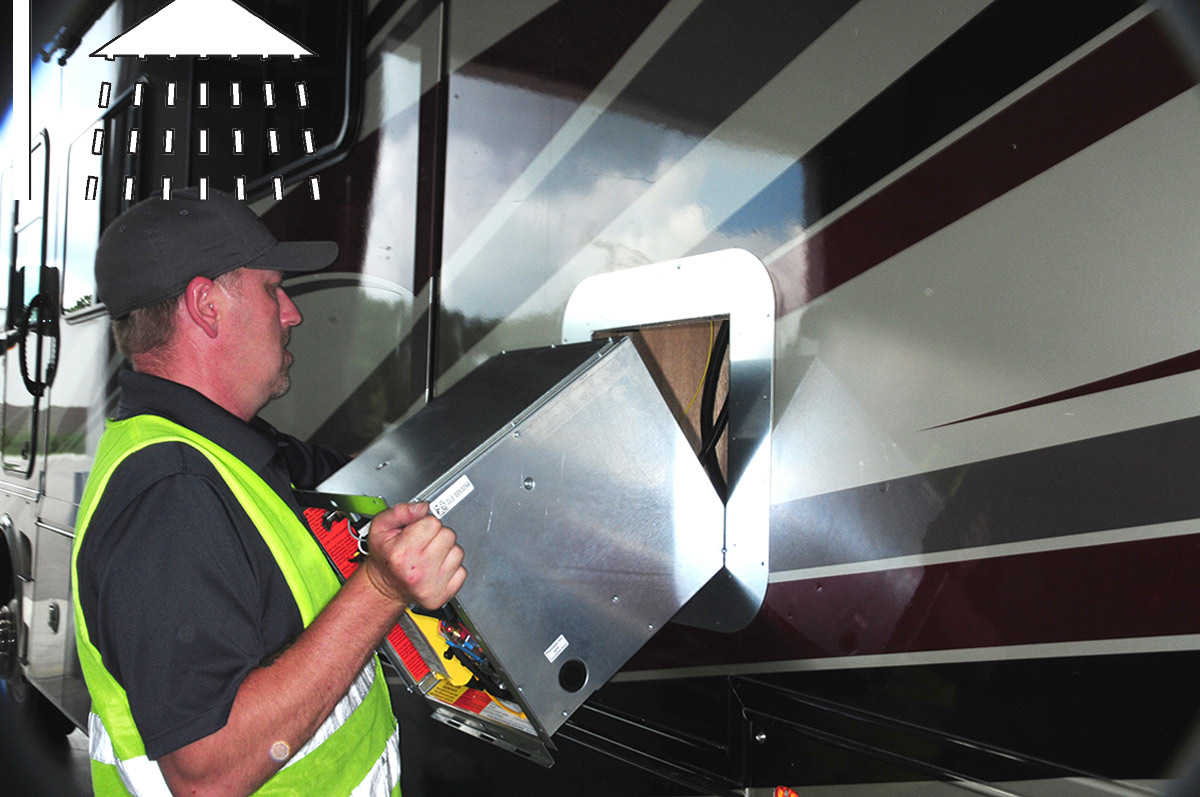
umans love their shower time. Maybe it’s the comfort afforded by personal time standing under a brisk waterfall of soothing water or maybe it’s a place where new songs are tested. In a stationary home, there’s plenty of water to linger under the shower — but that’s not the case in an RV. Conventional RV water heaters have limited supply, controlled by a LP-gas burner or electrical element. Most can provide 6 to 12 gallons of water, but there’s always down time if back-to-back showers are taken by multiple occupants. Truma’s AquaGo instantaneous water heater overcomes that annoyance by providing all the hot water you want — without interruptions.
There are several manufacturers who include the AquaGo as part of their build, but for those who would like to upgrade, one of these sophisticated water heaters can be retrofitted by Truma at its Elkhart, Indiana, facility or by one of its certified dealers scattered throughout the country. Truma (www.truma.net), a company with a huge presence in Europe (headquarters in Munich, Germany), does not sell the AguaGo to the aftermarket unless the unit is being installed by one of its trained technicians.

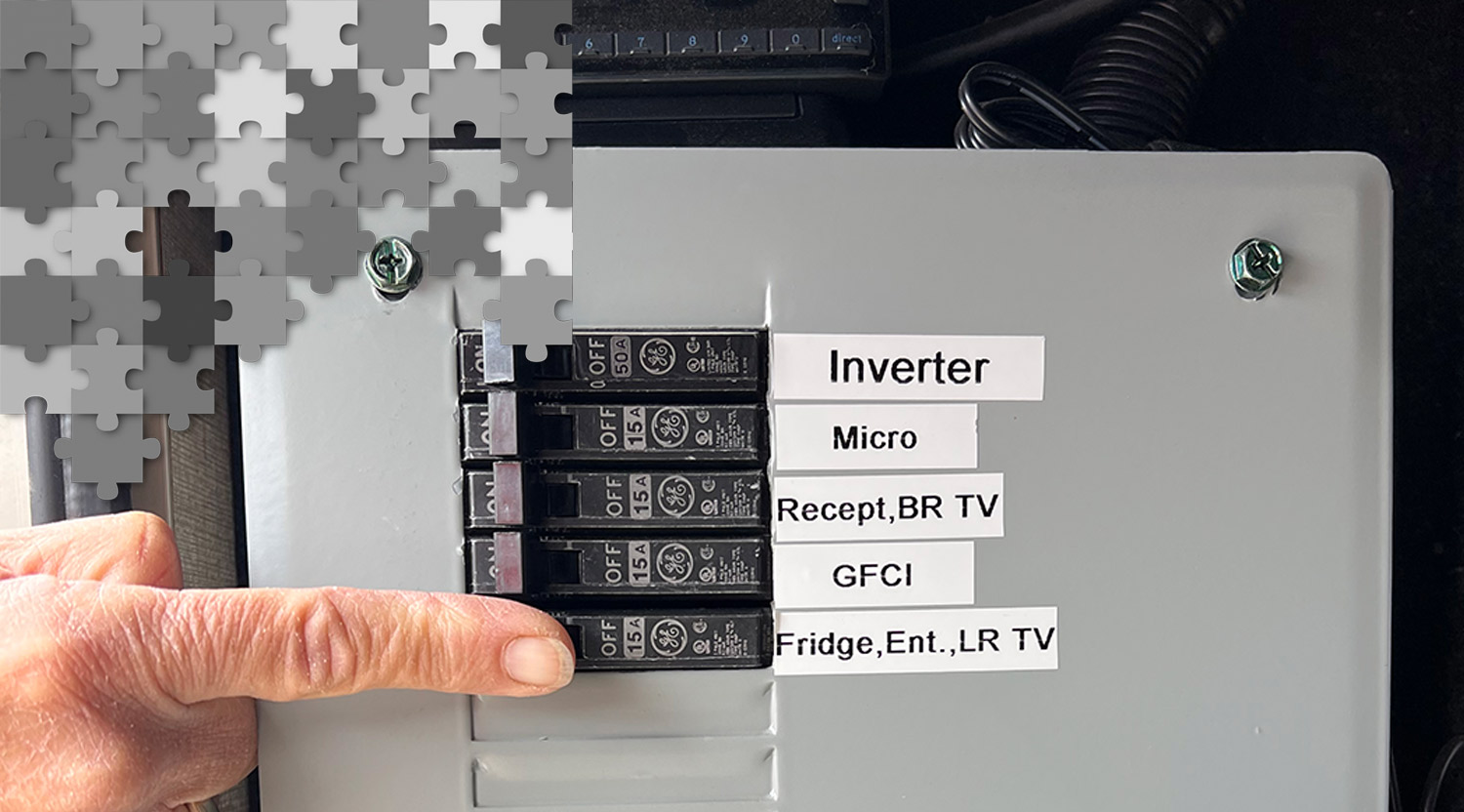
t happened — as is so often the case with an RV — without warning: All of a sudden, the 120-volt AC power went off at the outlets inside the slideout room of my fifth wheel that were powering the refrigerator, TV and other electronic devices. As I discovered, the breaker in the subpanel for the solar inverter was flipped and multiple attempts to reset it failed. A thorough search for the culprit eliminated all the other circuits in the fifth wheel — and resulted in the discovery of a shorted Molex connector under the belly pan out back. These connectors are commonly used make it convenient to disconnect power to the slideouts, but they can be exposed to moisture and many times are not secured properly.
So, they burn up.
Of course, the failure was while in an RV park located in a small town, precluding us from locating a new Molex connector quickly; it was going to take a few days via Amazon. Rather than wait to restore power — we didn’t want to go without our refrigerator and TV — I improvised by purchasing a few electrical parts at a local hardware store. They included a waterproof junction box and strain relief fittings, along with a few wire nuts. Total cost was around $45; these parts are commonly found in hardware and home improvement stores.

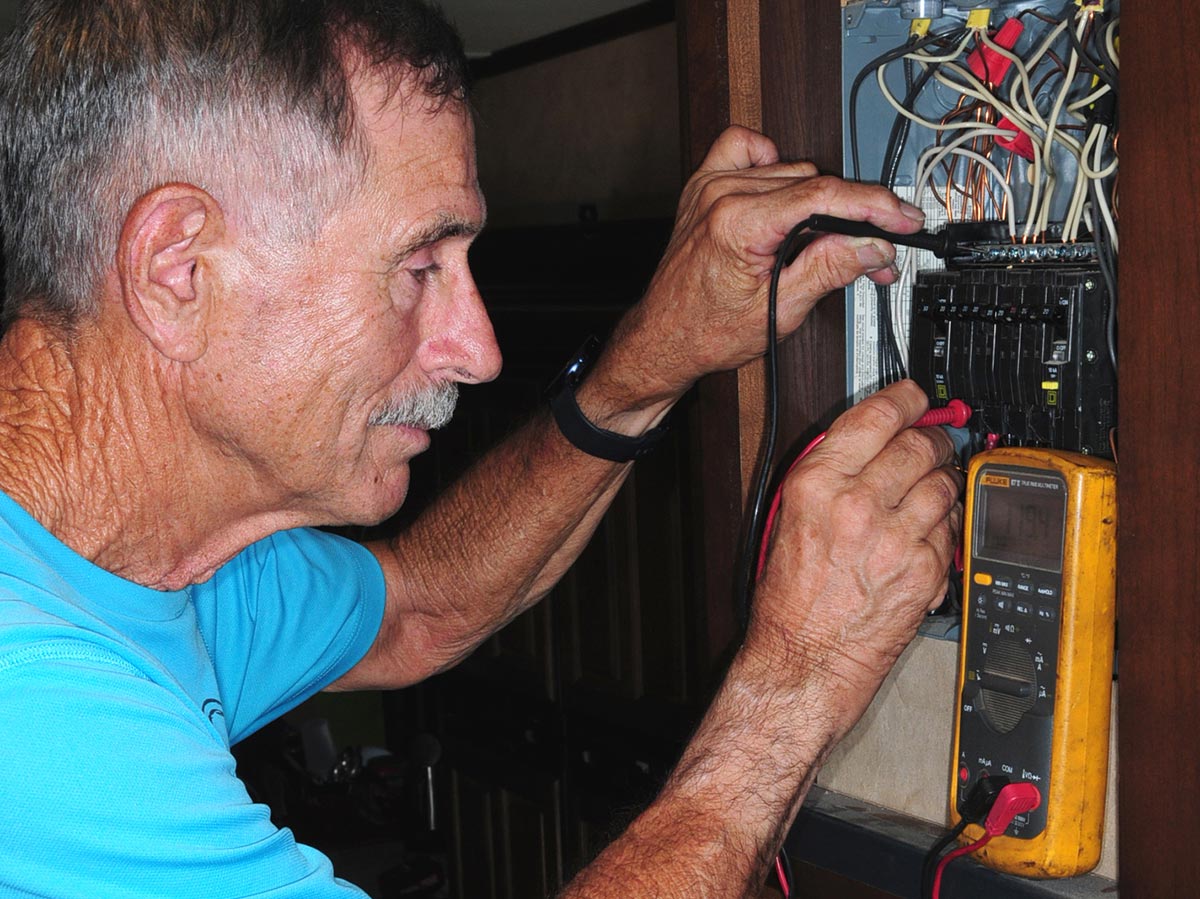
nlike your home, RVs have dual electrical systems: a 12-volt DC (direct current) circuit to operate appliances like the furnace and demand pump and 120-volt AC (alternating current) power to run air-conditioners, washers/dryers and refrigerators, among others. The network of wiring, connectors and outlets is fairly complicated — and when something goes wrong, chasing down the gremlins can be difficult. That’s why most people rely on professional help, but with some understanding of how these systems work, do-it-yourselfers can fare well when diagnosing and/or repairing electrical issues.
AC or DC
Electrical systems can be identified via their respective distribution panels. If the panel is fitted with home-style breakers, it’s feeding the 120-volt AC appliances and accessories and will be labeled accordingly. Those systems tied into a box or panel with fuses or small (push-in) breakers will operate on 12-volt DC power, and should also be marked clearly. One exception is the use of a 12-volt DC-style fuse within a circuit board, even though it’s powered by 120-volt AC current.

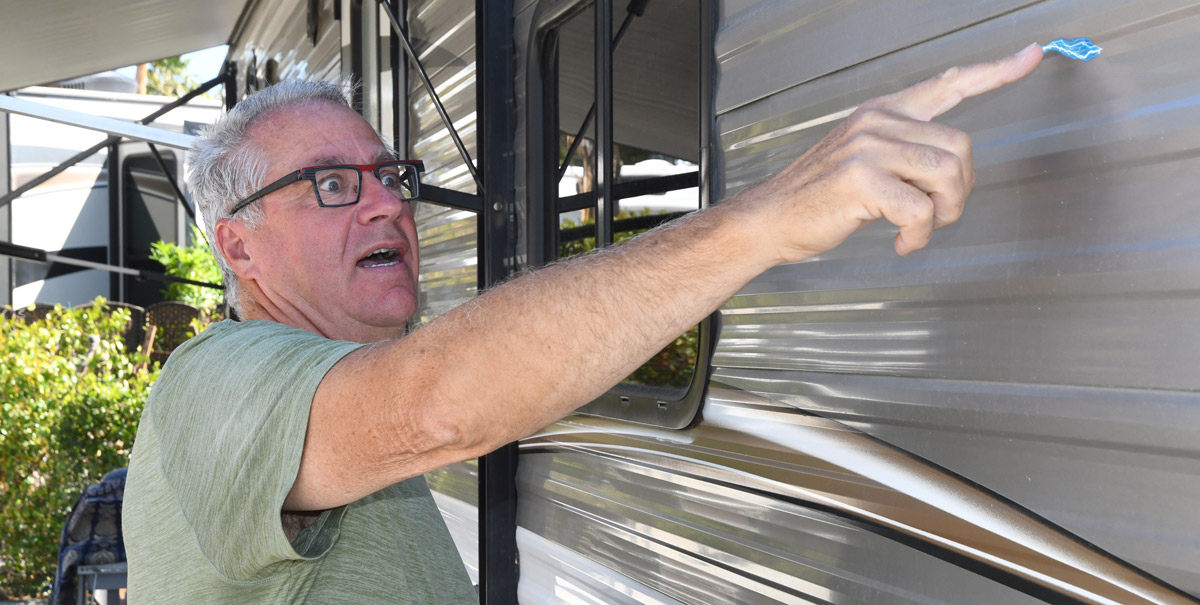
hose of you who are seasoned veterans of camping have likely encountered “hot skin” situations a few times over the years. New RV owners, however, may be surprised and alarmed the first time they touch the side of their RV while standing on the ground and feel a shock. Is this normal? Can it possibly be dangerous?
No, it’s definitely not normal. And yes, it can be dangerous under certain conditions and circumstances. But first, let’s get a few definitions out of the way.
What is “Hot Skin”?
There’s really no formal definition of a hot-skin voltage in the National Electrical Code (NEC). In fact, the phrase “hot skin” is unique to the RV industry. In nearly all other industries and trades it is called a “contact voltage” or “stray voltage.” However, I’ll stick with the term “hot skin” since that’s what the RV industry has been calling it as far back as the 1960s.
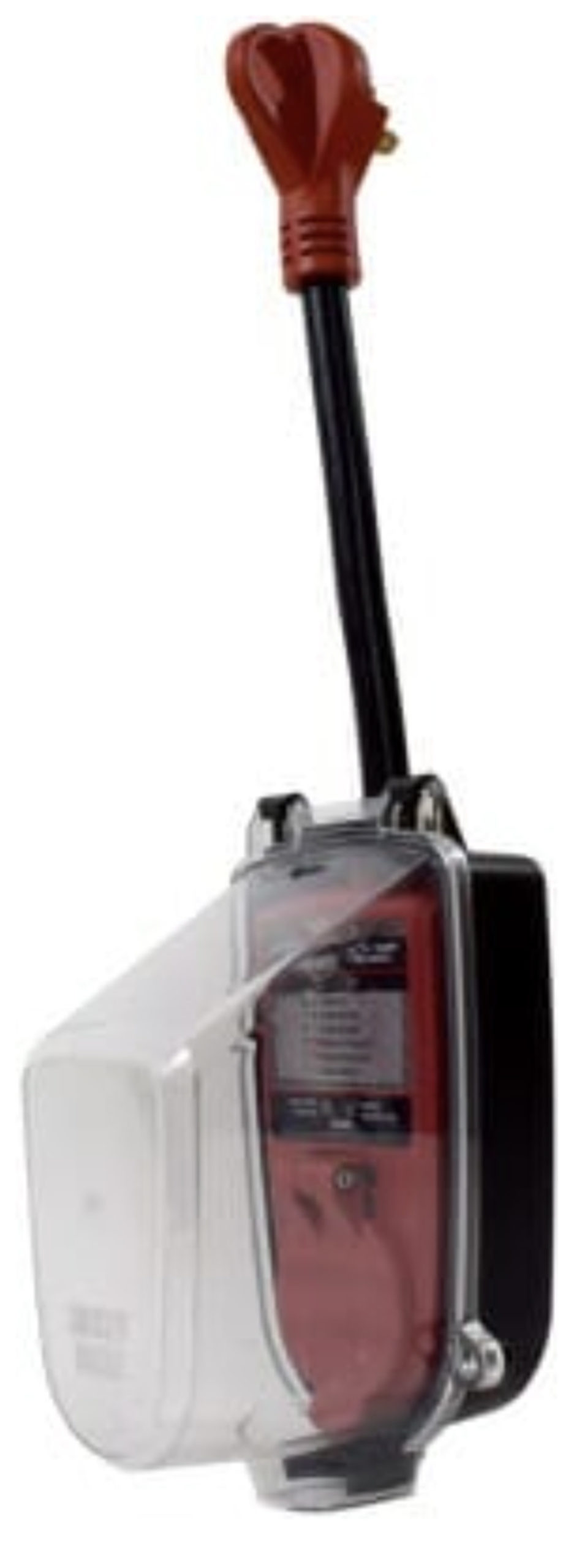
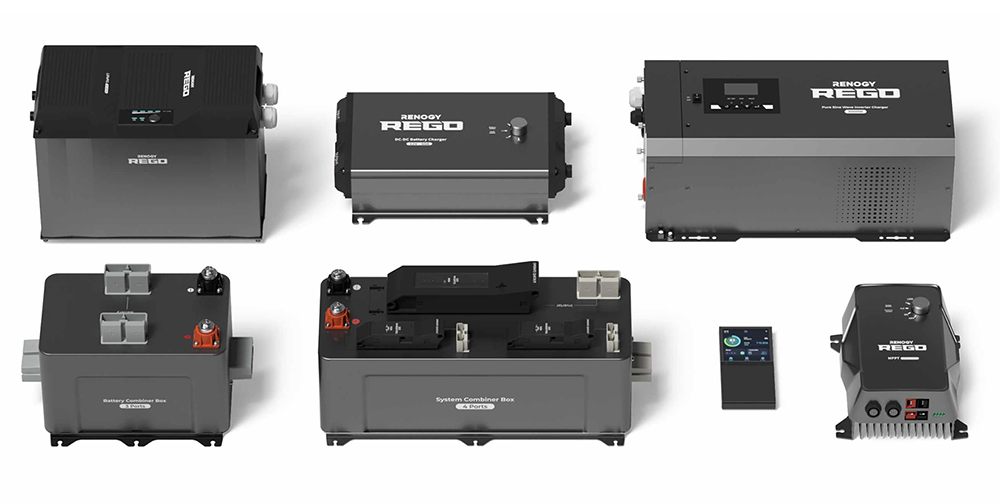

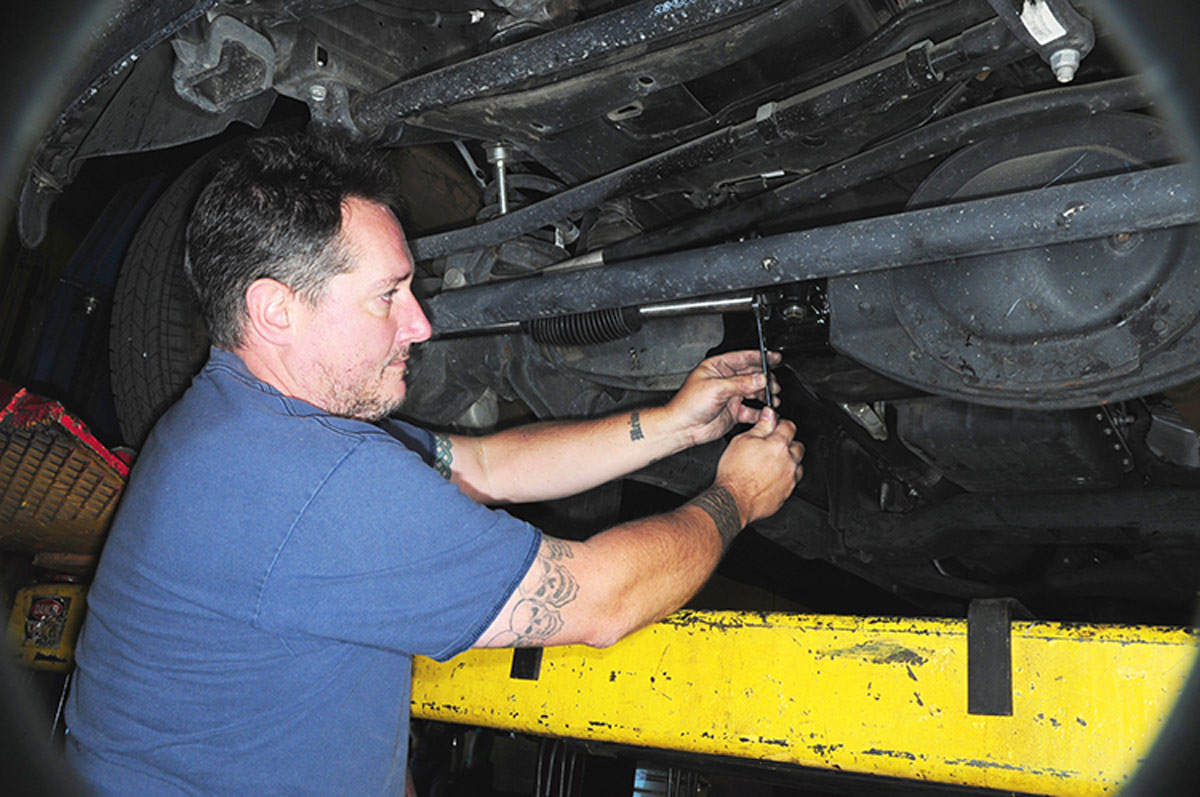

hen it comes to suspension products that improve handling, most aftermarket suppliers love to compare the results to that of driving a sleek little two-seater automobile. You’ve heard or read such claims countless times: “After installing our ‘gizmo,’ your truck will handle like an expensive sports car.” An exaggeration, to be sure. Granted, in most cases upgrading certain suspension components will make a difference — especially to road-weary drivers who find it necessary to continually “fight the wheel” — but you still can’t escape the realities of physics. Tow vehicles will not handle like sports cars because steering is not precise and heavy-duty suspensions are not finely tuned like that of a Lamborghini.
Steering dampers, for example, are supposed to “tighten” steering components somewhat — but in reality, while such stock, shock-absorber-like steering stabilizers may be better than nothing, they can only do so much.



